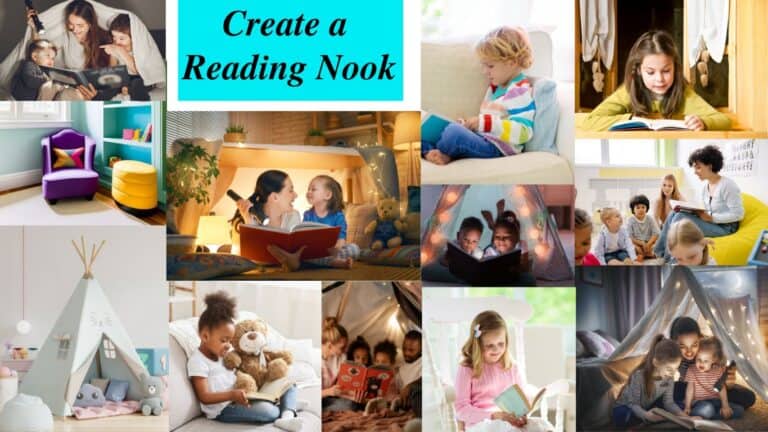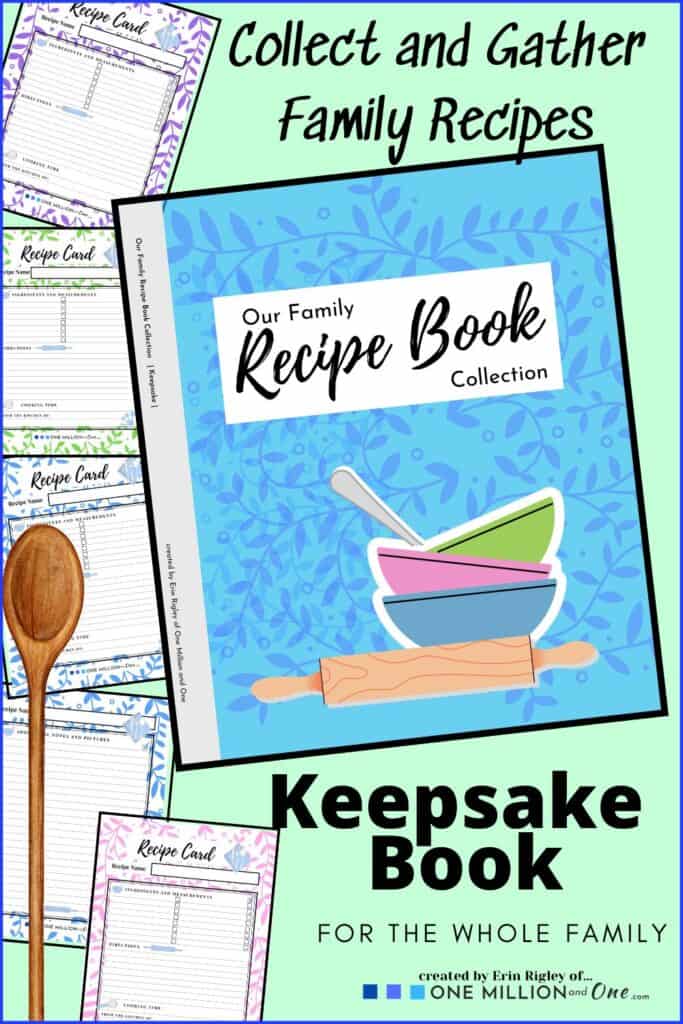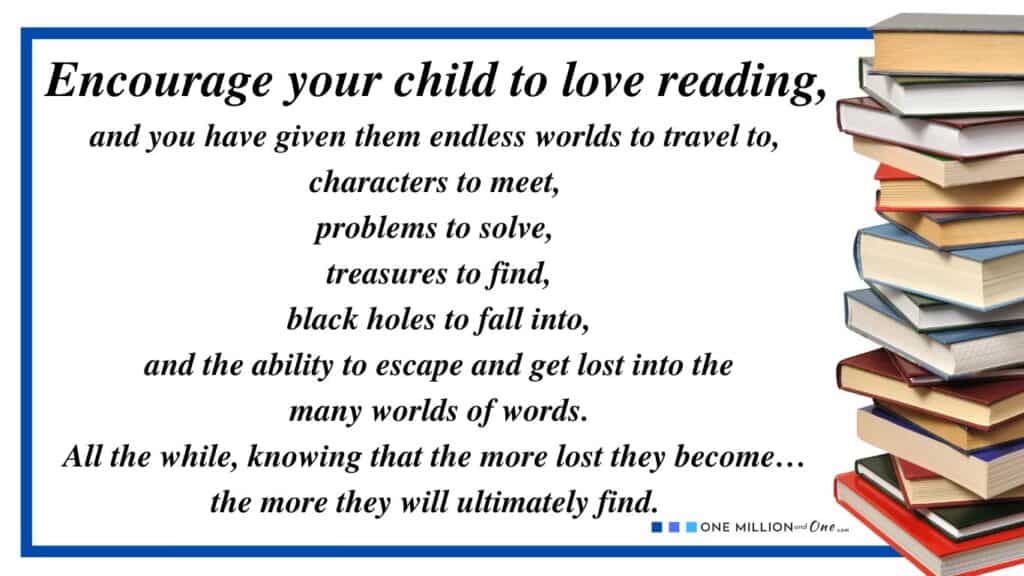Encouraging your child to LOVE reading is an incredible gift that will prove beneficial for years to come! Reading is essential to a child’s developmental growth. It helps to build their language skills, and improves their cognitive, emotional, and social skills. Encouraging your child to read will provide them with lifelong benefits.
- Language Development: Reading will introduce children to individual word sounds, new words and language patterns. It will help develop their vocabulary, grammar, and sentence structure. They can learn verbal tones, inflection, and effective forms of communication.
- Cognitive Development: Reading requires a thought process to understand and interpret content. Reading will help children develop their cognitive skills, such as critical thinking, problem solving and encourages creativity.
- Imagination and Creativity: Reading is usually one of a child’s first introduction to imagination and creativity. It allows them to think beyond their current world and explore new ideas.
- Emotional Development: Reading can help children recognize emotions, and develop ways to process them. Storylines can help children develop an emotional awareness, and hopefully teach empathy towards characters and storylines.
- Social Skills: Reading with children is a great way to encourage communication and their ability to engage with others, which ultimately increases their social skills.
- Academic Skills: Reading helps children with their comprehension skills, which is the ultimate foundation to school readiness.

As parents, Care Givers and Teachers it is easy to understand why we want our children to develop a love for reading books and the written word.
However, this can be easier said than done, especially in today’s technologically advanced world. Here are a few tried and true methods to encourage your child’s love of reading.
1. Start at a Young Age: The earlier you introduce books and storytime to your child, the more likely they are to develop a love of reading. Start reading to a child as an infant. Even though they do not understand words yet, they will begin to associate books with positive and enjoyable experiences. Even young children will react to the different character voices you use, and the inflections of your voice. It’s a great way to create a bond with your child.
2. Be a Role Model: Let children see you reading and enjoying books. Be open to discussing what you are reading (you may need to adapt it to their level). Encourage your child to share their reading experiences with you. This can open a form of communication that will travel with them through their educational years.

3. Make Reading a Family Activity: Reading together as a family will only increase family bonds. Taking turns reading and acting out characters with younger children will increase their love of books and reading. As your children get older, set aside time together for silent reading. FUN TIP: Create a family book club where you all read the same book and discuss together, this can be helpful for school assigned books. You can also make it a contest to see who can complete chapter books first. Trivia’s can be fun also, especially with older children.) Encourage older children to read to younger children, this is a great way to encourage sibling bonds. The younger child is entertained, and the older child is usually happy to show off their skills. (Even if your child is not reading the printed words, have them share the books and narrate the pictures)
4. Praise your child for their accomplishments: Recognize your child when they learn their alphabet letters, letter sounds and word recognition. Praise them for reading sentences and completing a book. Praise them for the amount of time they read, the amount of books they read and the levels they accomplish. Reward them with additional books!
5. Make Reading Fun: Reading should never feel like a chore, a task, or a punishment. Reading should always be a fun and enjoyable experience. That’s not always easy to accomplish. Incorporate games, coloring pages, trivia and contests. Encourage theme related activities (see the next step). For Example….if your child reads a book about dump trucks, then take a drive by a construction site so they can see one in person OR if your book talks about nature, then take a nature walk and talk about the similarities in the book. It is a fun and easy way to engage your child, and you will be amazed at how excited they are to make the connection (especially younger children). This is an educational tip that all teachers know and utilize often
6. Incorporate a Theme: Try relating books into a theme. Teachers will incorporate themes into daily or weekly themes, to maximize interest and engagement. Try to find related books and activities that correspond to a similar theme and encourage your child to make the connections. For example: There are many books about Apples, find several and read a different one every day. Then visit an Apple Orchard and pick your own apples, or talk to an apple farmer or grocery employee. Go to the grocery store to find many different varieties. Let your child pick a few different types and have an apple tasting with different color and shaped apples (you will be surprised at how different they taste) Create apple art projects, make apple coloring sheets, (you can even use actual apples to dip in paint and make apple prints). Set up an apple market in your play area. You can even let them use actual apples, paper bags and baskets. Make apple recipes: you can make applesauce or dip caramel apples together. Young children love mashing cooked apples. See our article about Cooking with Children.

7. Make Books Easily Accessible: Always have books easily accessible to your child. Put them on a low level bookshelf, or in a special container. It is important to have several areas in your home so that books become easy go-to items and activities. Baskets are a great home for books and will look neat and decorative. Switch books around often to keep your child’s interests. If your child is in school or childcare, ask what books they are reading at school. You may be surprised to find you have many or the same books or authors at home. Once you do put the books they read at school on top of your child’s pile of books and watch how excited thy get when they make the connection. Encourage them to talk about their school Storytime and open up lines of communication. Even if they tell you that Jimmy didn’t listen during story time, it still means they are sharing their day with you and opening lines of communication!

8. Create a Reading Nook: Try creating a special reading area or nook. A designated chair, or a defined area in your home can become a reading area. You can make a tented area by hanging a blanket or towel across two chairs (this works great at the beach or pool also) Place a basket of books, a pillow, warm blanket and maybe a stuffed animal or two to make the area cozy. Children love to “own” this area as their personal special spot. Let them but define it as a reading area and encourage them to use it only when they are reading.
Enlightened Through Stories Poster by One Million and One.
Available on Etsy at OneMillionandOneArt Perfect for a Child’s Room, Reading Nook, Classroom, Hallway and Office
9. Go to the Library: Sign your child up for their own Library card. Introduce them to a Librarian who in my experience are always happy to share their love of books, especially with new readers. Teach them to respect the books that they borrow. Define a separate area or basket to store the Library books, and teach children the responsibility of keeping their borrowed books stored in this area when not in use. Another great tip is to check your Library for free activities that they may offer. Many Libraries will have a special story time or book clubs.
10. Use Technology to Your Advantage: Todays technology has made reading more accessible. Audio books can be a great alternative to the TV. Use audio books when traveling or during quiet time or naptime. E-Books can bring a variety of books to you at easy access. Interactive reading apps can engage your child in the reading experience, especially if they have difficulty sitting to focus on a story. However please limit the screen time and always remember that there is nothing better than actual books and special story times. When your child is older these special story times will be a great memory for both of you!
11. Choose Books as Gifts and Rewards: Put Books on every child in your life’s gift list. If you celebrate Birthdays and Holidays with gifts, make sure that books are on the top of the list. Tell your relatives to purchase books for your child instead or in addition to toys.
12. Let Your Child Choose Their Books: Children will be more engaged if they are reading about topics that interest them. This is important especially when your children are older and have required reading for school, that most likely not the most interesting to them. Let them have an outlet of books they do like to continue their love of reading.
When children are young, and you are reading to them, let them pick their Storytime book (even if they choose the same book over and over again…which they will) Repetition creates a comfort for your child, and stimulates their learning process.
13. Open Forms of Communication by Asking Questions: Ask your child open ended question…”Why did he do that?” “What would you have done?” “Oh no, what do you think is going to happen next?”(prediction questions) Contextual questions will kick start their cognitive memory skills. “Do you remember her name?” “How many people has she met?” Ask Factual questions too “How many trees do you see?” “Where is the dog?” “Can you show mw the color red?” “Do you see the letter S?” For older children ask them to give you a summary of the book, aske the to tell you their favorite part of the book and their least favorite part. Ask them if any of the characters remind them of their selves or any one else that they may know (this can be very insightful)
14. Write Their Own Books: Encourage your child to write an illustrate their own books. This is a great way to capitalize on their creativity and cognitive skills. It also enhances their writing skills on many levels including their fine motor skills of using writing tools and writing letters, words and sentences. Let your child be their own Author and Illustrator to their own creations. Purchase blank books or staple many sheets of paper together. Let them share their finished products with friends and families. This is a great way to include distant relatives with a personalized gift from your child.
This is great for older children also. They can create characters, a plot and a storyline, Bonus if they can create a story twist also. Creating a chapter book will let a child’s imagination take off with their own personal vision of a story. It is a fun and time consuming project, which is not always a bad thing. It can be the perfect answer to that dreadful comment…“I’m bored”
Take a Look at the “My Stories” Line of Keepsake Books on Amazon. Your child can be their own Author and Illustrator to these printed and bound keepsake books and journals. The “My Stories” series was developed to inspire language art skills and promote writing techniques in the early learner (K-6) Themes such as Pirates, Unicorns, Superheroes and Writing Prompts and Comic Books, which includes writing and sketchbook pages infused with themed art work and topic ideas to inspire your child. Great teaching tool to use in the classroom or at home. They are great gift ideas also. Have Fun
15. Utilize a Book Tracking Journal: This is a great to make your child’s reading accomplishments tangible. It is a fun and interactive way to keep their reading memories and accomplishments. A journal will become a keepsake and be a lot of fun to be reminded of their thought processes when they are older also. Take a look at the “My Book Tracking Journal” in Adult and children’s version.
Children’s My Book Tracker Journal Tracking 25 Books
is a Keepsake Journal for the student reader, that memorializes their reading journey in a personalized and creative way. The Children’s My Book Tracker Journal has 120 pages broken down into several different tracking methods.
-
25 Review pages individualized for each book that you read.
- Book Image areas to draw, print, and paste images and quotes. Bullet Journaling area to be creative and individualize each book.
- Visual book library for you to color in each cover.
- Book List of Titles and Authors
- Wish List area to list your future books of interest.
- 25 circled numbers to color in as you complete each book.
- A Genre Tally List
- Halfway Summary
- List your favorite books
- Favorite Lines and Quotes
- Memorable and creative word list
- Final Summary Page.
My Book Tracker Journal Tracking 100 Books (for teenagers and adults)
is a keepsake Journal for the avid reader, that memorializes your reading journey in a personalized and creative way. The Book Tracker Journal has 130 pages broken down into several different tracking methods.
- 100 individual review pages individualized for each book that you read.
- Visual book library for you to color in each cover until you reach the 100 books.
- 100 Book Cover squares to cut and paste miniature cover pictures.
- 100 Book List of Titles and Authors
- Wish List area to list your future books of interest.
- 100 circled numbers to color in as you complete each book.
- A Genre Tally List
- Halfway Summary when you reach the 50 book mark.
- Top 10 favorite books
- Favorite Lines and Quotes
- Memorable and creative word list
- Final Summary Page when you reach the 100 book mark
16. Make Books portable: Take books with you everywhere you go. Everywhere! Throw them in the car, the stroller, the diaper bag, sports bags, and your own purse or back pack. Let them read in the car on trips to the grocery store or longer trips. You will see the advantage when a child can engage in a book while you are at the mall finding big sister a pair of shoes, or visiting the store for home improvement items. Take books when you go to the playground or visiting a park. It is easy to incorporate some down time with a story. Reading under a tree or at the beach o even in your own backyard can be tranquil and exciting at the same time.
17. Throw a Book Party or Book Swap: Invite friends to come to a book party. Each child brings one of their favorite books, (these could be new books or pre-owned books) Have your child gift wrap the book, but make sure they realize that the book is a gift for someone else. Each child gives a book and each child leaves with a new book. Book Swaps can be child driven where the children are part of the book swapping process or a parent swap where the parents pick which books to loan and borrow. It is a great way to get a great variety of books without a huge cost.


18. Include your Memories: If you liked a certain book as a child, chances are your child will too. At the very least it is a fun walk down memory lane, which will hopefully remind you why books are such an important part of a child’s growing experience. Children as young as preschoolers can benefit from listening to chapter books, encouraging more complex listening and thinking skills, and hopefully increase a child’s attention span. Children will need to remember and recall what happened in prior chapters prior to reading a new chapter. This is another opportunity to encourage open communication. Bonus Tip: Asking older children to read and share their books with younger siblings is a win win!
“As a parent I hope my children will always love books and reading, and pass their love onto their children and grandchildren.”
There are so many fun and creative ways to encourage a love of reading with your child. Implementing any of them will be strongly beneficial on so many levels.
The ability to become deeply entranced by the published word, especially as a young child is truly a gift. There is something magical in each child’s vision of the details of a book. They can vary as deeply as each child’s individual personalities.
That in itself, is priceless.

Want to Share?


























